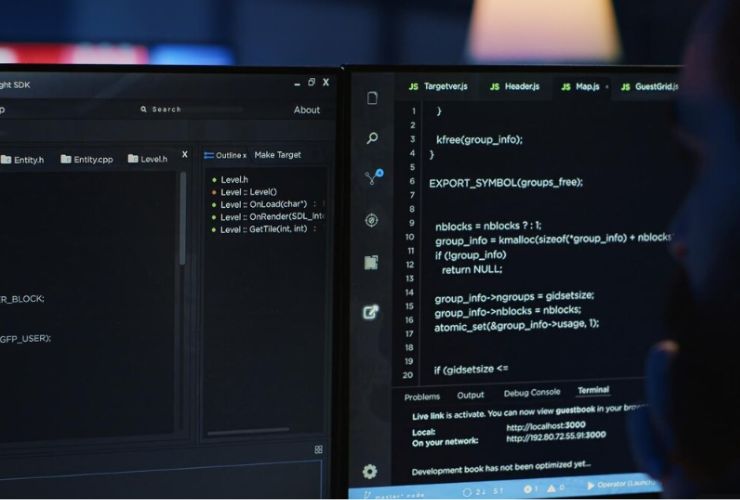In modern web development, there cannot be a greater emphasis put on the importance of testing your application. Testing your application is done by writing tests on your application, which makes your application more reliable, maintainable, and high quality for your codebase. One of the best PHP frameworks, Laravel, provides tremendous native tools to write feature as well as unit tests easily. No matter if you are creating a small application or maintaining a complicated system, having good tests written can save you a lot of time by finding bugs early in the development process and streamlining your workflow.
Here in this blog post, we’ll observe how to create effective unit and feature tests in Laravel. We’ll also look at how to leverage PHPUnit integration and use best practices so that your application acts as desired under different situations.
What is Unit Testing in Laravel?
Unit testing is concerned with testing your application’s individual methods or pieces independently. It helps to ensure that certain pieces of functionality work as desired without affecting other external pieces or dependencies. Unit tests in Laravel primarily test the logic of one class, service method, or helper.
Why Unit Testing is Important
Early Bug Detection: The unit tests catch bugs early in the development cycle so that you can fix problems before impacting the production environment.
Better Code Quality: Unit testing forces developers to write in modular, reusable, and testable forms. This leads to a high-quality code base that is easy to comprehend and modify.
Trust in Refactoring: Having a sound collection of unit tests, you have the trust to refactor your code with the certainty that the tests will pick up any unanticipated side effects.
Unit tests also make it easier to test individual pieces without having to contend with the system as a whole being complex. This kind of testing is logic and correctness-based, so you can test how individual pieces of code work without having to contend with interactions with other areas of the system.
What is Feature Testing in Laravel?
Feature testing, or integration testing, is used to verify that multiple components or features of your application play well together. While unit tests verify isolated chunks of code, feature tests verify how the chunks of code work together. For example, a feature test might verify that a user can log in to the application, process a transaction, or complete a form.
Why Feature Testing Is Important
Replaying Real-World Situations: Feature tests mimic real-world user behavior by testing the interaction of how individual parts work together. By doing so, you feel good that your application is running as intended in a production-grade environment.
Feature-Ready: Feature tests enable you to have the certainty that every piece is performing its function together. By doing so, you have the ability to catch early bugs that may fly through unit testing.
Testing Complex Interactions: Unit tests are ideal for testing independent logic, while feature tests allow you to test where there is an interaction of various components such as form submissions, user logins, or database queries.
Feature tests will keep the app performing as expected while it deals with users, and they give very good feedback regarding user behavior and system behavior.
Best Practices for Writing Tests in Laravel
In order to compose good and effective tests, best practices are essential to adhere to. Laravel testing packages will make it easier to write tests, but the right testing practices will also make your tests more reliable and better in quality.
1. Isolate Tests:
Unit tests should focus on testing isolated components, ensuring that each part works independently. On the other hand, feature tests should simulate real-world scenarios, where multiple parts of your application interact seamlessly. Isolating tests ensures that you’re able to track down the cause of failures more effectively.
2. Use Factories for Test Data:
Laravel includes database factories that enable you to create test data effectively. These factories avoid you from inserting test records into the database manually by test case and therefore make it faster to write tests and keep them clean and tidy.
3. Take advantage of RefreshDatabase:
The RefreshDatabase trait clears the database between tests so you always have a clean slate to work from per test. This is especially useful when authoring feature tests since feature tests usually mean altering the database. With this trait, you prevent unwanted data persistence that can destabilize test outcomes.
4. Test Edge Cases:
Though it is important to test the anticipated “happy path” (proper sequence of operations), edge case and failure path tests must also be executed. For instance, testing your application’s behavior when data is missing or in an incorrect format will have your application perform well under different conditions.
5. Automate Tests with CI/CD
To have a healthy codebase, embed testing within your Continuous Integration (CI) cycle. This ensures tests are automatically executed whenever code is pushed into a repository, such that new additions of code do not introduce bugs into the system. Automated tests ensure problems are identified early, accelerate development cycles, and introduce stability.
6. Use Assertions Effectively
The testing environment of Laravel includes a variety of assertions using which you are able to test your application functionality. Whether it’s testing if a response’s status is, checking if some data is stored in the database, or confirming that a view includes certain data, assertions help you test more efficiently and with greater speed.
Running Tests in Laravel
Laravel is very easy to execute tests with its own Artisan command-line. Both feature and unit tests can be executed using simple commands, and the result will be shown in a clear format, so it’s easy for you to identify any failed tests.
Running tests with commands like php artisan test allows you to run all your tests or identify specific cases, providing feedback indicating what parts of your application you should work on. The output provides explicit information required for tracing and correcting failing tests.
Conclusion
Unit and feature testing is a fundamental practice in maintaining your Laravel applications stable and of good quality. It will make sure that you’re thoroughly testing individual components and how they interact, which will reduce the risk of bugs and make your codebase more reliable as a whole.
Laravel’s built-in testing tools, powered by PHPUnit, make it simple to write, manage, and automate your tests. By following best practices like using data factories, ensuring test isolation, testing edge cases, and automating your tests, you’ll be able to build more maintainable, bug-free applications.
The time invested in writing comprehensive unit and feature tests will pay off in the long run, resulting in better user experiences, faster development cycles, and a more reliable application. Start writing tests today, and your future self will appreciate the stability and robustness they bring to your projects.














